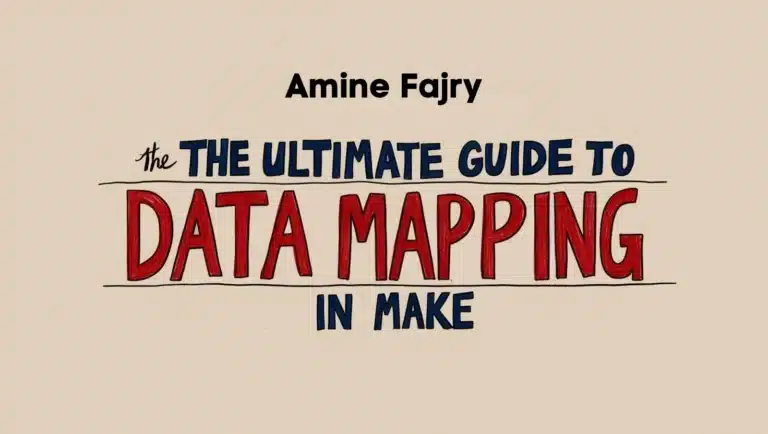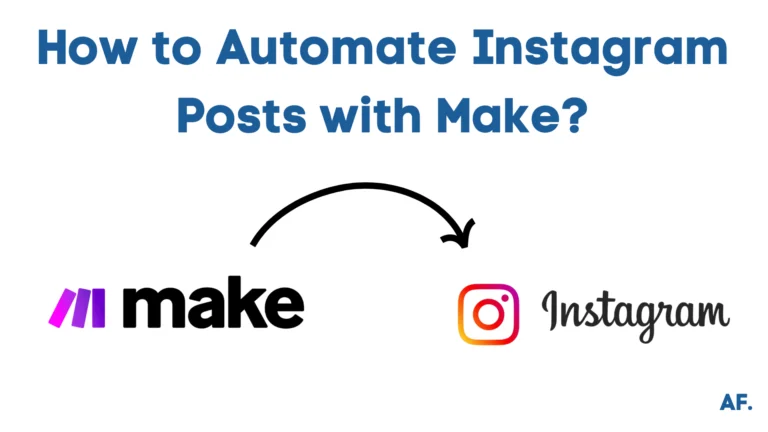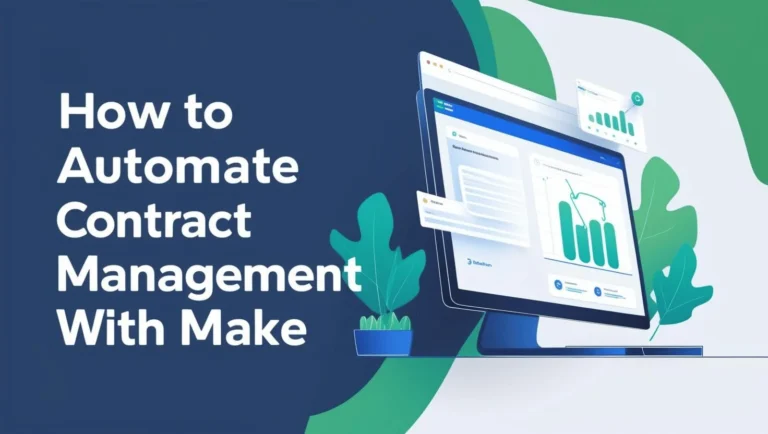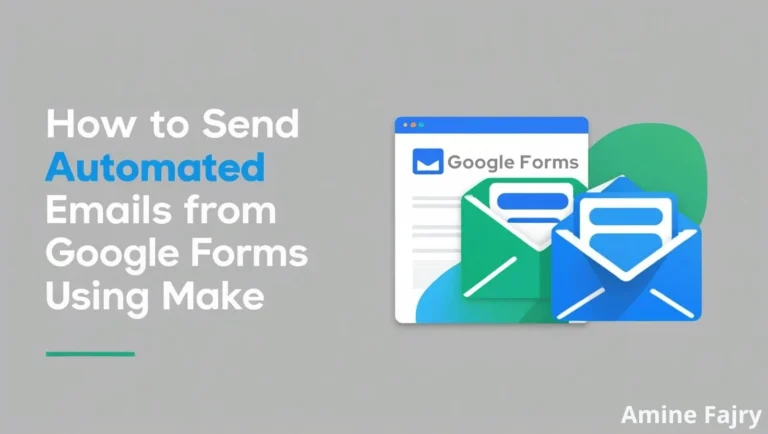How to Build a Social Media Automation System with Make

Have you ever felt tired of managing multiple social media accounts? You’re not alone! In today’s world, social media automation isn’t just a luxury – it’s a necessity. According to the VerticalResponse Survey, small businesses typically spend 6 or more hours weekly on social media management. But what if I told you you could cut that time in half? Enter Make (formerly Integromat) is a powerful automation platform revolutionizing how we handle social media.
In this step-by-step article, I will show you how to build a social media automation system with Make using one workflow in one scenario. With this article, I will show you how you can publish your design with Canva. You can even go further if you have practiced this step by step. For this example, I chose Pinterest, Instagram, and Twitter, and I will use Canva for the design. And for titles and captions, I will store them on airtable. Why? I chose Airtable rather than Google Sheets because it is much easier to use on the Make.
Let’s go!
What You’ll Learn
This step-by-step guide will show you how to:

- Set up a multi-platform social media automation workflow
- Connect Canva for automated design publishing
- Integrate Airtable for efficient content management
- Post automatically to Pinterest, Instagram, and Twitter
- Scale your system to handle multiple platforms
Prerequisites
Before we begin, you’ll need:- A Make account
- Business accounts on your chosen social media platforms
- Canva accounts for design creation
- Airtable account for content management
Setting Up Your Platform Accounts
Pinterest Business Account

- Sign up for a Pinterest business account at pinterest.com/business
- Complete your business profile
- Create at least one board for your automated posts
Instagram Business Account

- Convert your personal Instagram account to a business account
- Link it to your Facebook Business Manager
- Enable content publishing permissions
Twitter Account Setup

- Create a developer account at developer.twitter.com
- Generate your API keys and tokens
- Enable read and write permissions
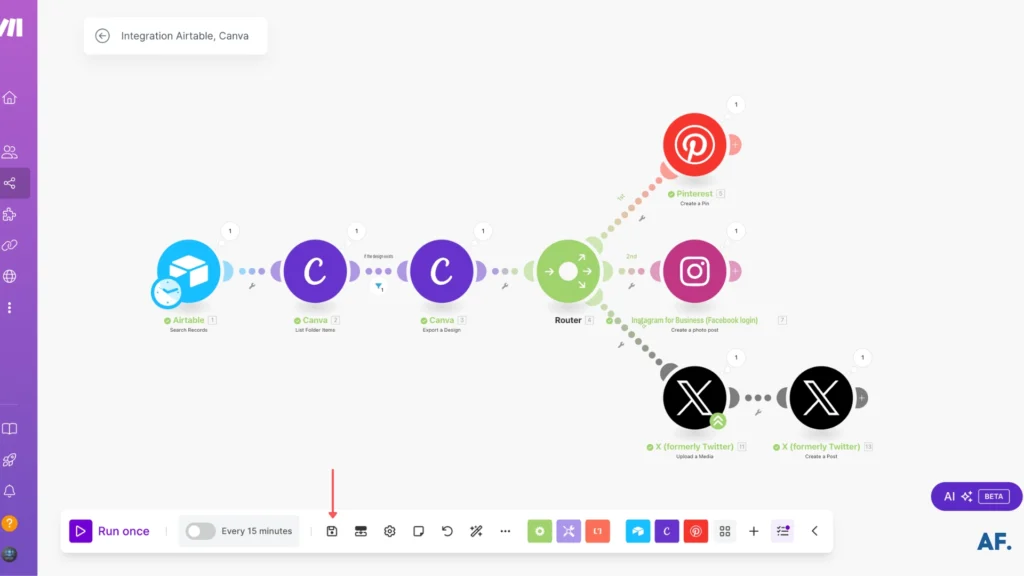
Step 1: Create a design on Canva

Sorry, I’m a terrible designer 😂; here is a video tutorial from Canva to create a good design and how to create one.
Step 2: Store Data on Airtable
Here is my data stored on my airtable on columns (titles, taglines, and captions); if you are new to air table, here is a video tutorial:

Let’s zoom in :

Step 3: Create your scenario
Go to your dashboard on Make and click “Create a new scenario“

Step 4: Add Airtable module
Choose “Airtable” app one :
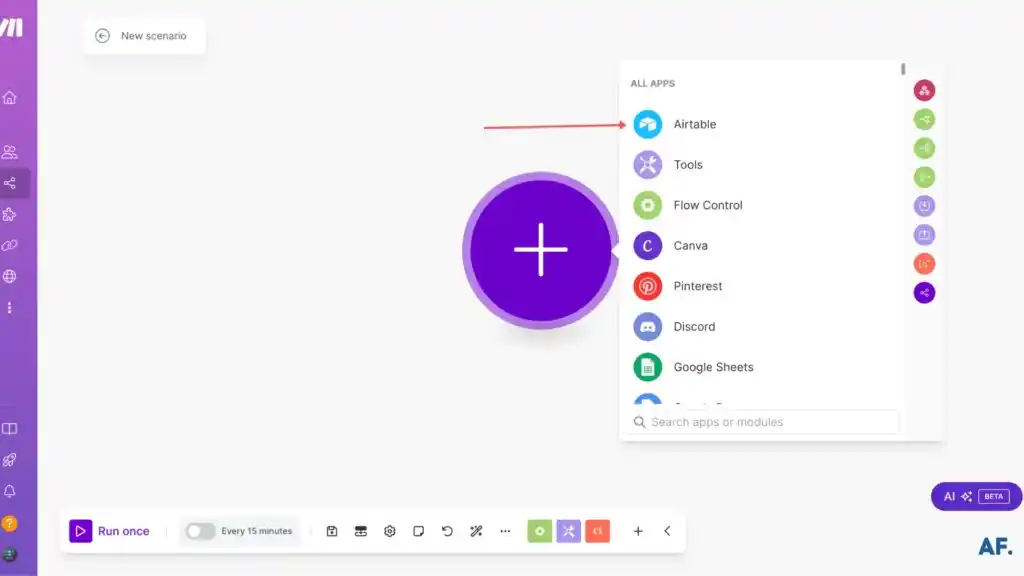
Choose “Search Records” :

Put your basename tablename and sort your Id if you have one :

Step 5: Setup Canva Module
Choose “List Folder Items“:

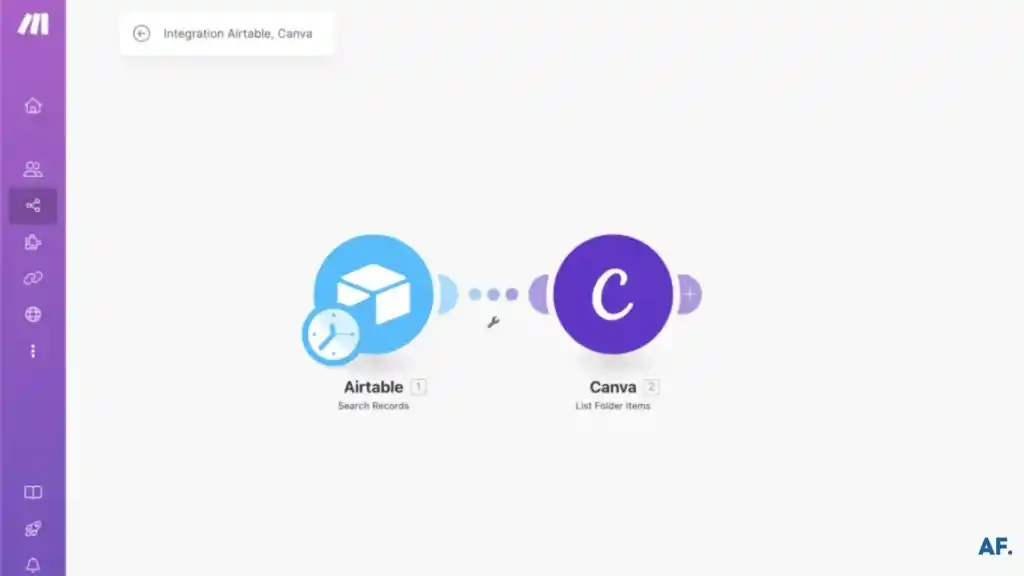
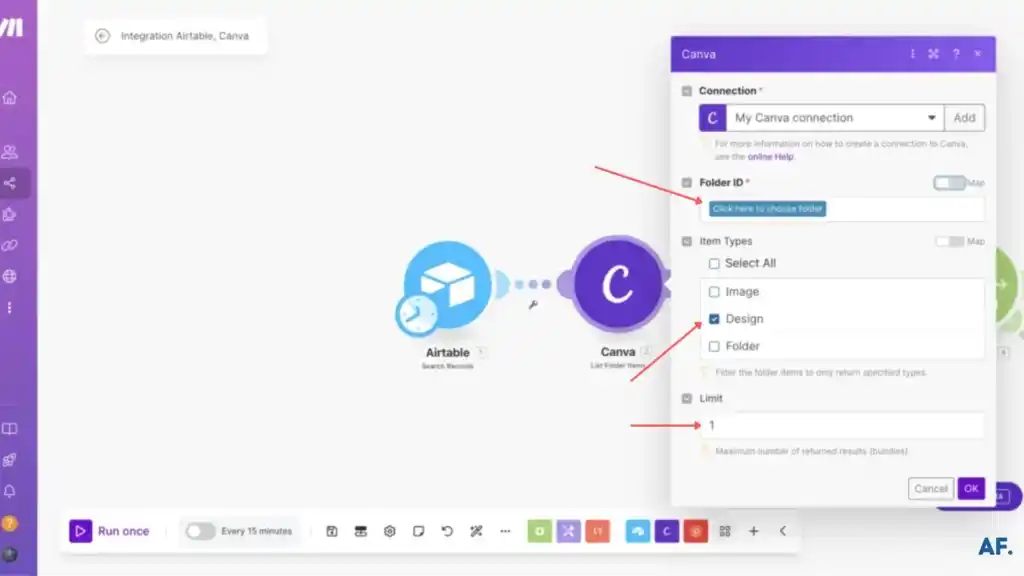
Then, after you configured your “List Folder Items” module, let’s add another module to export the design :

I added a filter, it is (optional) in some cases, but if you want to go further here is how you can add it. In the link between two canvas modules, click “Set up a filter“. Here, basically, I said if the design exists on canva continue the scenario, if not. Scenario will stop :
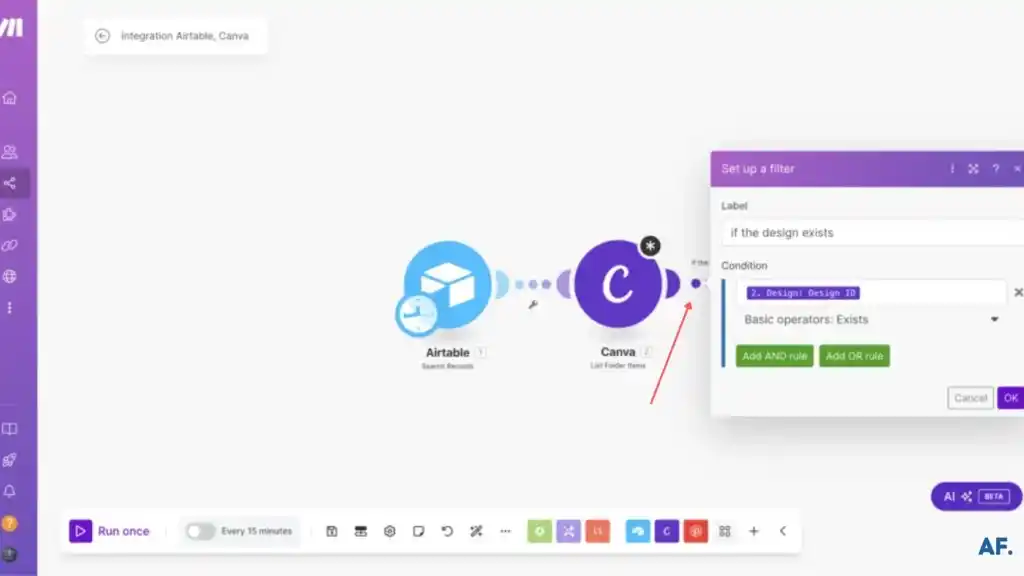
Then run your scenario and see if it works :
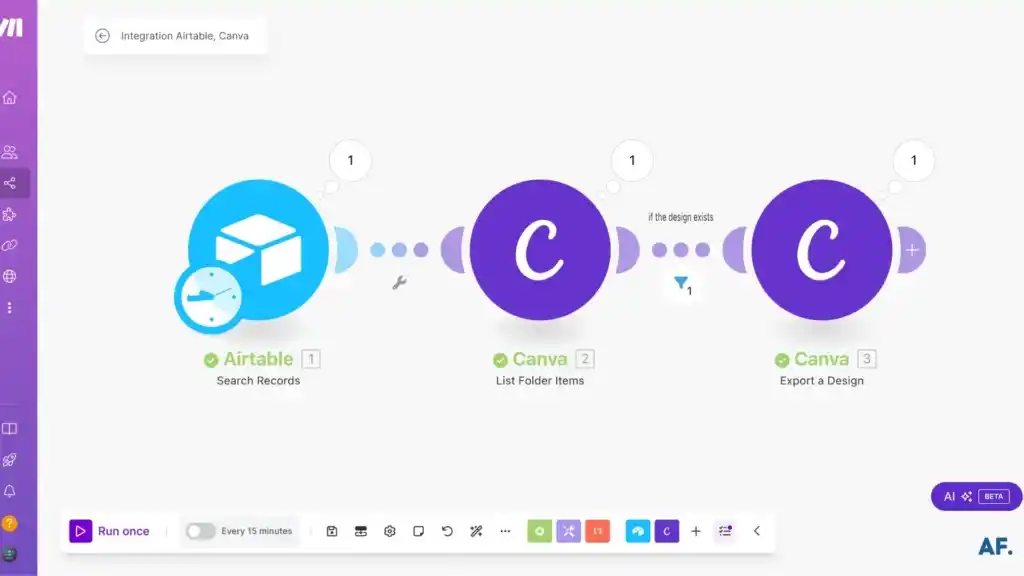
Step 6: Add a Router
Choose the “Router” module :

Step 7: Pinterest
After you added a “Router” module to the scenario, go to your Pinterest account and create a board before we create a pin; here is how you can create a board on Pinterest :

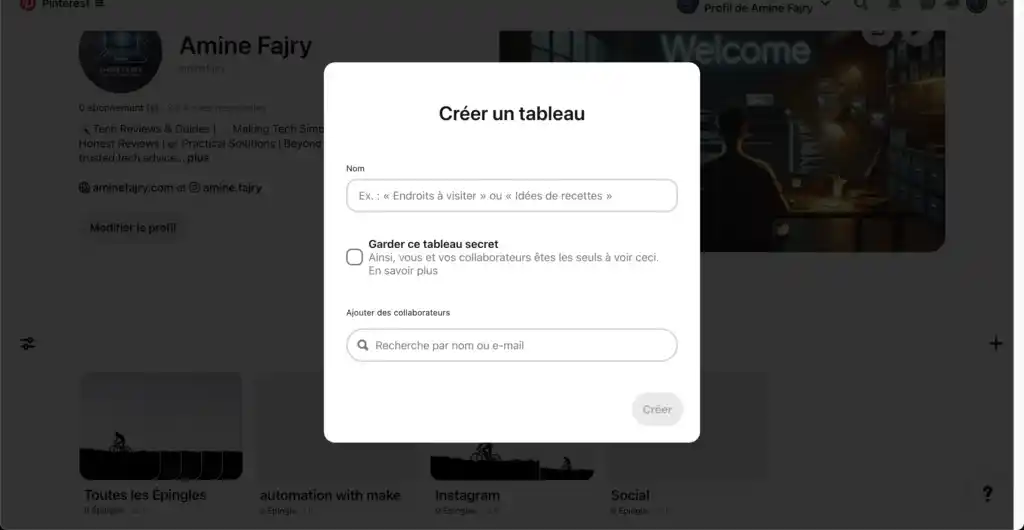

After the board is created, you can now add Pinterest to the scenario; choose “create a pin” module one :
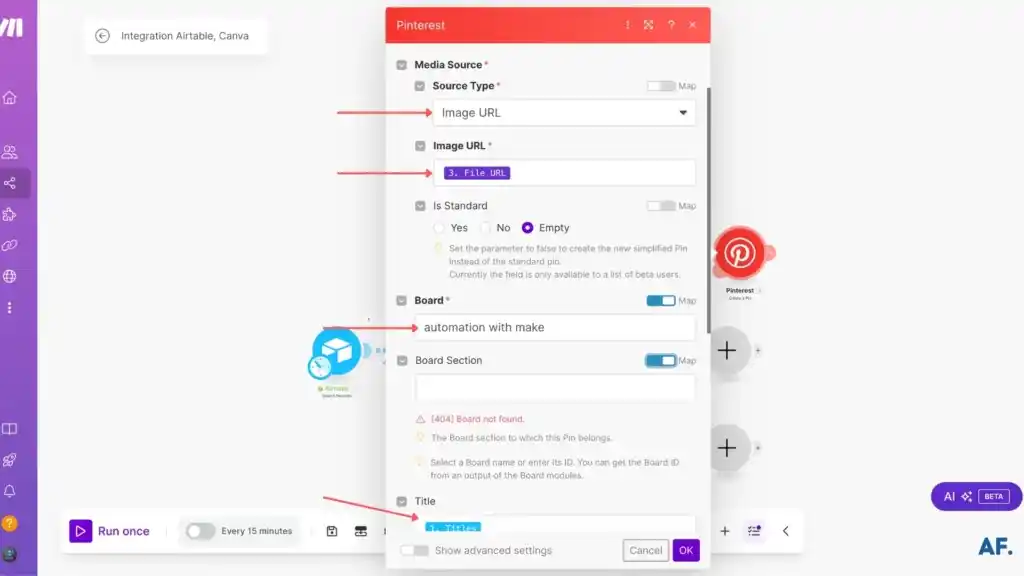
Step 8: Instagram
After you succeed, set up your Pinterest module and test your scenario. Congratulations! It was the hard one, and we will add the Instagram module. Choose here “create a photo post“:

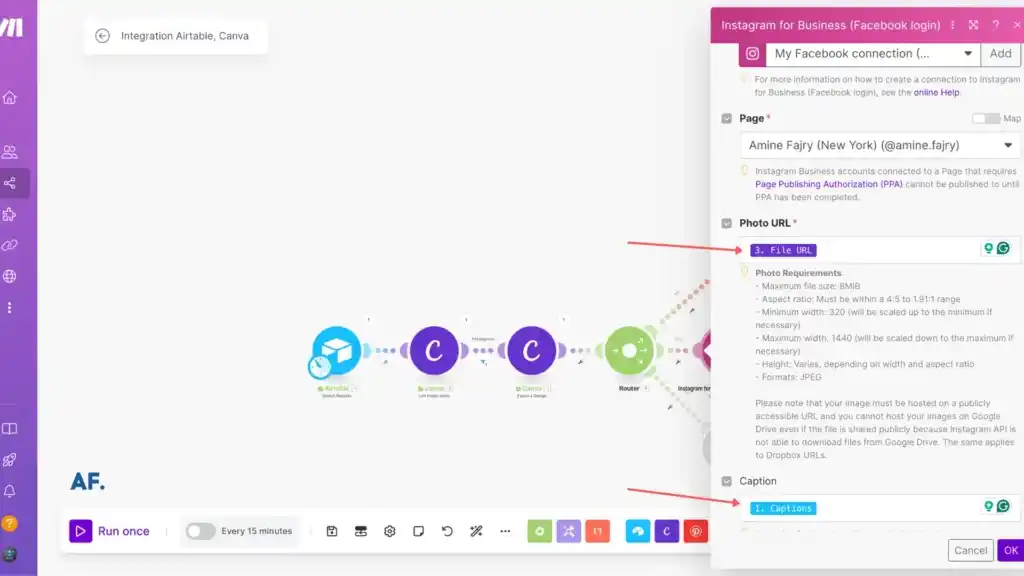
Step 9: Twitter
Once you open “Twitter” app, change the version from v6 to v5, Elon Musk whyyy? Then choose “Upload a Media” :
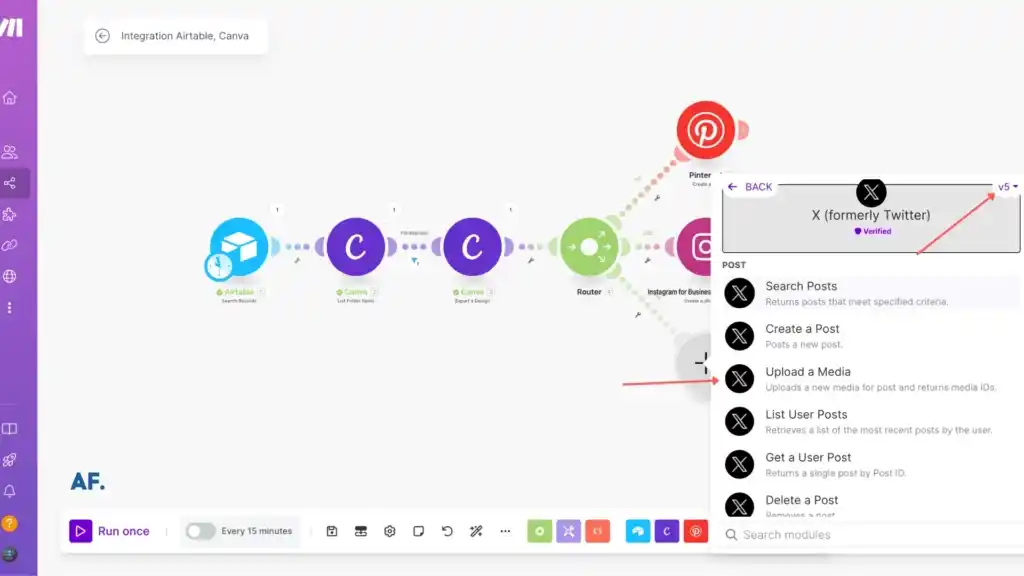
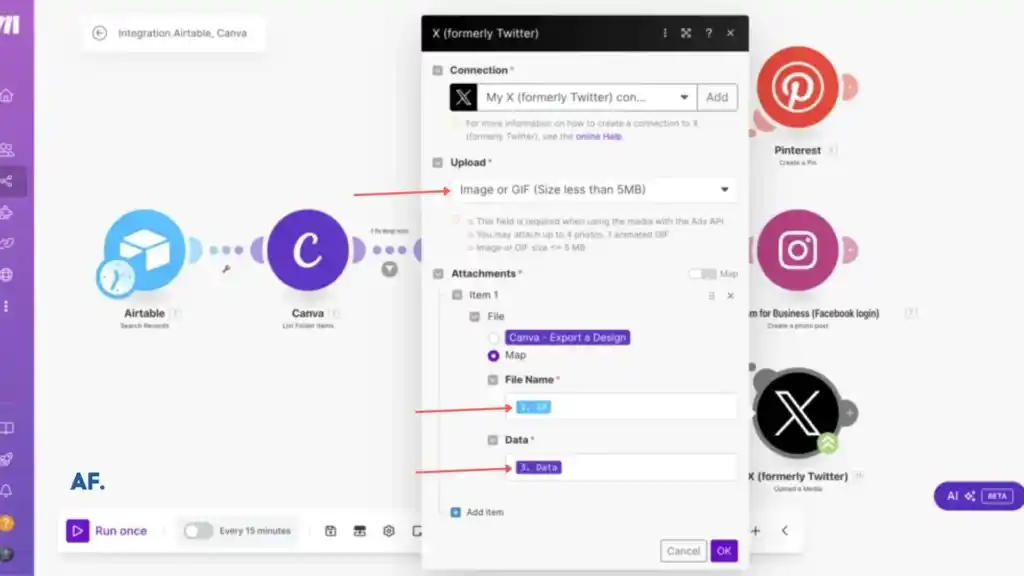
Then, after adding the Twitter module, choose version v6, and click “Create a Post” :
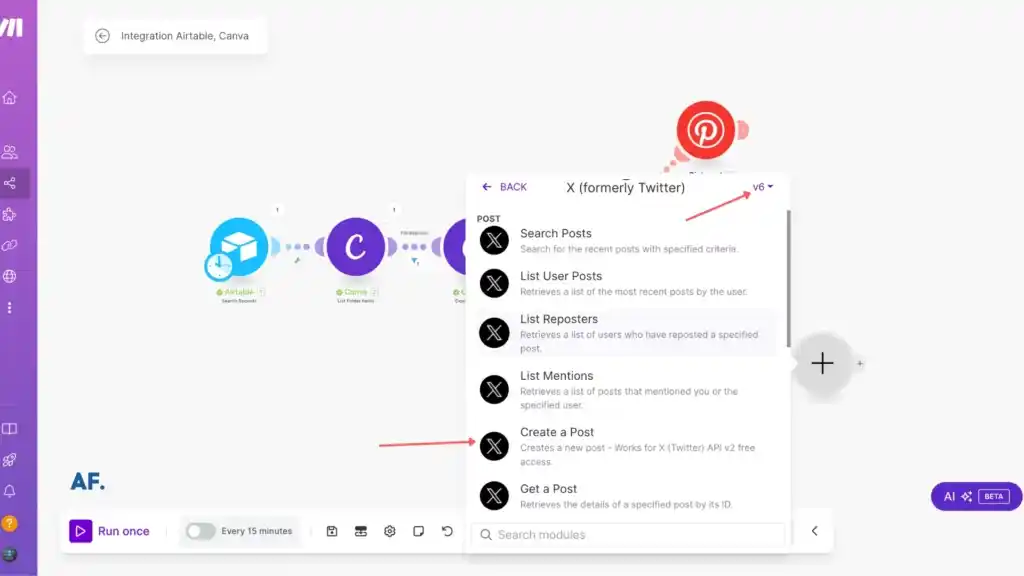
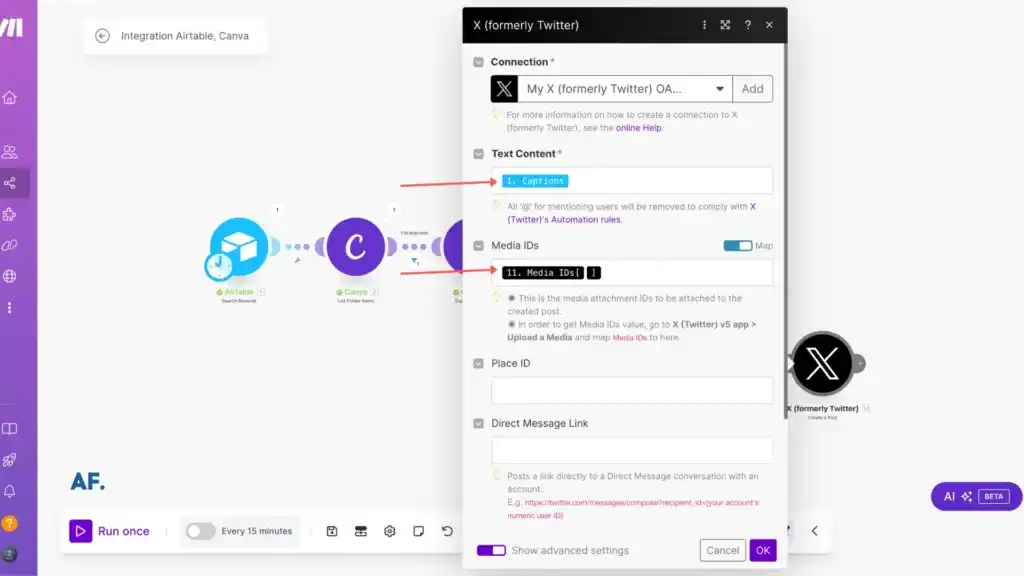
Step 10: Run Your Scenario
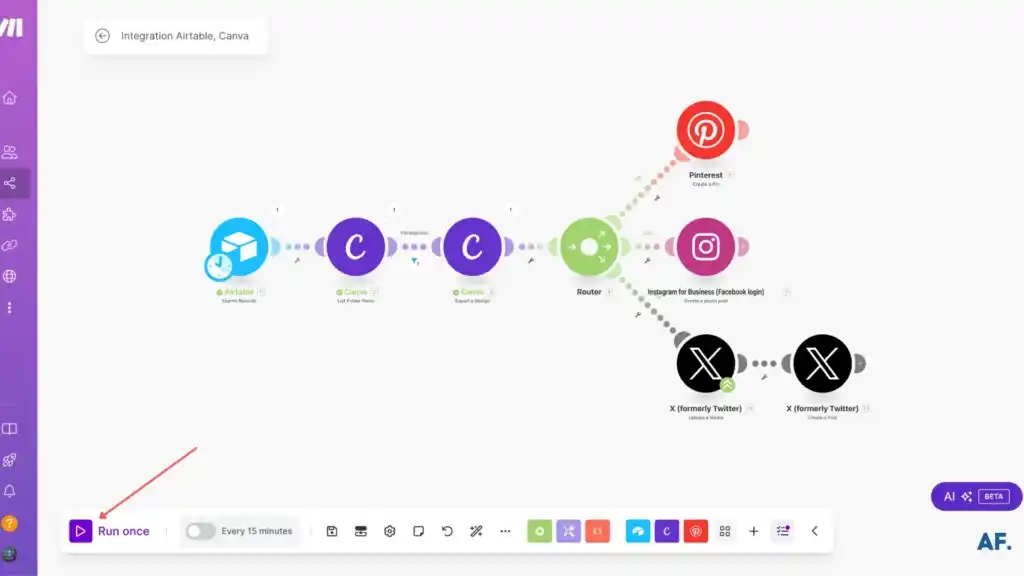
Step 11: See The Results

Let’s see if it worked :
1. Pinterest

2. Instagram

3. Twitter

Crazy right? With only one click, you can post content, and after that, if you want, you can be creative and add other social media like TikTok, Reddit, LinkedIn, etc.
Step 12: Schedule Your Automation
This final step focuses on scheduling. I’ve compiled a comprehensive guide that walks you through the process, with an example to help you understand.
Final Thoughts
Building a social media automation system with Make isn’t just about saving time – it’s about creating a scalable, efficient process that helps your business grow. Automation should enhance your social media presence, not make it feel robotic. Start small, test thoroughly, and gradually expand your automation scenarios. Ready to take your social media game to the next level? Let’s get started with Make!
FAQs
Do I need to create separate designs for each social media platform?
No, you can use a single Canva design for multiple platforms. The automation system will export and distribute the same design across Pinterest, Instagram, and Twitter. However, you may want to ensure your design dimensions work well across all platforms.
What happens if there’s an error while posting to one platform?
Make’s Router module helps manage the flow of your automation. If one platform fails, the others can still proceed with posting. You can also set up error notifications to alert you when issues occur, allowing you to address them promptly.
Can I customize the captions for different platforms?
Yes! Using Airtable to store your content, you can create separate columns for platform-specific captions. This allows you to optimize your messaging for each platform while maintaining automated posting. The article demonstrates how to connect Airtable to Make and use different fields for titles, taglines, and captions.

Further Resources
- How to Create Your First Scenario in Make
- How to Set Up Webhooks in Make: Complete Guide
- How to Automate Photo Posts on Reddit with Make
- How to Easily Use the Router Module in Make
- How to Automate Instagram Posts with Make
- How to Automate Facebook Posts with Make
- How to Automate YouTube Shorts with Make
- How to Automate Twitter with Make

